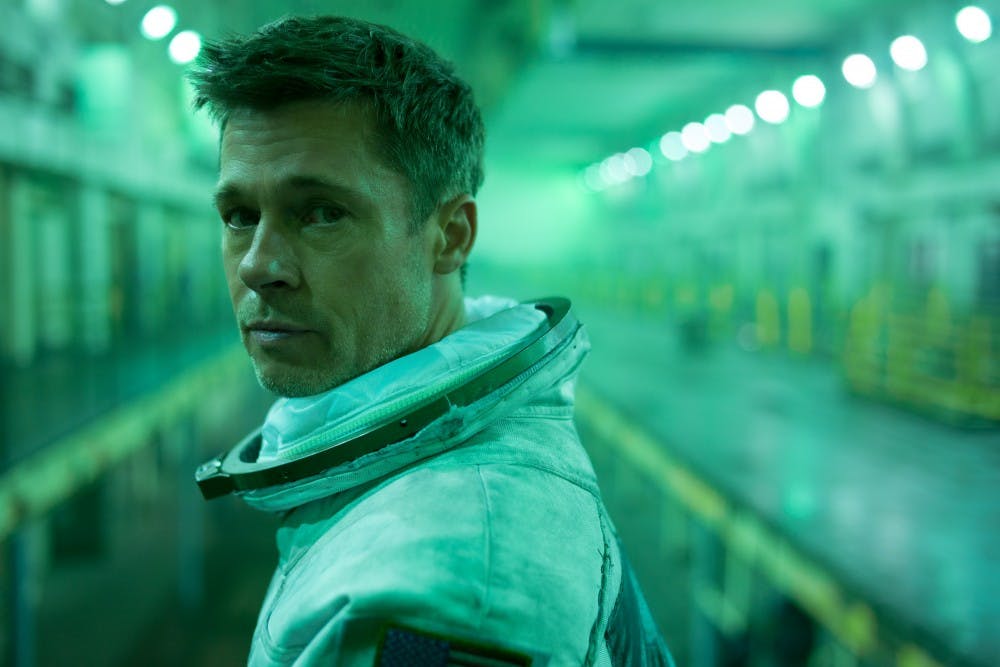From: Silver Screen
“Ad Astra” is narrowly propelled out of the orbit of a generic sci-fi epic by sheer starpower

Thirty years after Clifford McBride—a visionary pioneer in space exploration—went missing during a deep space mission gone wrong, his estranged son, Roy (Brad Pitt) is sent to search for him.
This probably sounds like something you’ve seen before. Hollywood churns out space epics like there’s no tomorrow -- such as “First Man,” “The Martian” and “Gravity,” just to name a few. Infectious space fascination has struck Brad Pitt with “Ad Astra.” Writer/Director James Gray, coming off the highly praised “The Lost City of Z,” has shown his ability to handle an expedition narrative. “Lost City” tells the true story of an explorer gone missing in the early 1920s; Gray has the ability to write a thought-provoking script and write an intellectual journey, instead of just of a physical one.
Brad Pitt has long waited for an Oscar, and while he refuses to campaign for one, this might be his best chance in many years. He is featured in every scene, either offering a slow walk down a cool corridor or a monologue dispensing his thoughts along with his slow drawl.
Gray’s script is thematically challenging and can force audiences to reckon with grand ideas, but it also feels too familiar in its execution. Stereotypical sci-fi tropes find their way into the film more often than not. “Ad Astra” attempts to build up a universe that feels close to our own with rough world-building scenes designed to make the environment feel real, but comes off as reminiscent of “Moon” and “Interstellar.”
Tommy Lee Jones stars as Pitt’s father, who hasn’t seen his son since he was a child and has focused solely on his work. This wears at Roy, as we see his fixation with his father and his absence. He sees the rescue mission with a level head, or so he says. Roy’s work as an astronaut requires him to take psychological evaluations, which enables Gray to write in some of the film’s most captivating dialogue, acting almost as a confessional.
Hoyte Van Hoytema, one of the world’s best cinematographers (“Dunkirk,” “Her”), accentuates every frame with his slow wielding touch and beautiful technical effects that will certainly be nominated for an Academy Award.
Though the film goes through more action beats than expected, and while some are more thrilling than others, the violence itself seems to detract from the overall push for the perseverance of humanity. The third act feels the most original and experiments the most in both style and storytelling, making for an exciting finish following what felt like a humdrum space action film until that point.
Getting Roy from point A to point B feels tiresome more often than not, but Pitt’s ability to keep audiences engaged prevented the movie from being disastrous during its less thoughtful moments. Better sci-fi media will have us look inward towards confronting our own humanity and what that means, “Ad Astra” is no exception. Challenging the unknown is a driving principle of science, meaning it is also a key part of science-fiction. Gray’s film plays with the idea that maybe we’re all we’ve got. Humanity becomes a topic that is subtly explored but deeply felt.





